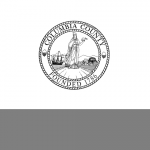LEGAL NOTICE FOR FIRE DISTRICT ELECTION Annual Election of Gallatin Fire District December 9, 2025 PLEASE TAKE NOTICE, THAT THE Annual Election of the Gallatin Fire District will take place on Tuesday, December 9, 2025 between the hours of 6:00 pm and 9:00 pm at the Town of Gallatin Town Hall located at 667 County Route 7, Gallatin, NY for the purpose of electing one … {...}
Budget Redo – From the Desk of Supervisor Reilly
A small town budget re-do at the very edge of a global financial crisis-a not so brief case study, of sorts.
I ask for a bit of patience my friends, this is a long post – but you may have plenty of time to read right now, so onward….
Trickle down tax policies has long been an interesting theory of economics and partisan argument. We now have a 2020 version to debate- trickle down crisis relief funding. As the saying goes, only the federal government can print money. They do not actually print money much anymore in reaction to a crisis, they instead digitally inject it through liquidity funding to fed banks and government backed lending sources; although you can still hope for the occasional paper stimulus check. In either case, it is only the federal government that can mortgage the predicted productivity of our future generations to provide money today directly to its citizens and also to the 50 states. New York State, as the current crisis epicenter, is facing an enormous fiscal crisis; and because they have to fund many federal approved programs, they will properly look to the federal government for some relief. New York State will then look to the state coffers much as the state looks towards the federal treasury. The individual counties have to fund state mandated programs, but may no longer have all the state funding to do so. Each county is like its own small state within the “country of New York” but with the caveat that the country of New York cannot print its own new money. Therefore a NY State county like Columbia, which went through a re-budgeting of its own on April 15, 2020; has to take a hard look at every dollar. You can look on the Columbia County website to view these deliberations and study their 2020 budget predictions. In short, the county is looking at a $10-$15 million potential shortfall this year which will result in rolling cuts across the board to all programs and departments dependent on how revenue comes in. It is a hard economic game theory to predict these shortfalls, as there are many “players” and variables. Things may turn out better, but some of these calculations were before the state closed for another 30 days, so some outlooks may indeed be worse than estimated. The State is also “taxing” 2020 county sales tax funds to establish a local hospital emergency fund, which will further decrease Columbia County sales tax in 2020.
Columbia County is one of the few remaining counties that is run by its towns instead of a central legislature, and as such; the towns share in county sales tax revenue and help set the county budget/expenses. So here in Gallatin, as we get down to the small town level, we still depend a lot on what goes on in the county. Columbia County helps Gallatin cover it worker’s comp insurance, its ambulance and emergency services and other shared program costs. If you do not pay your property tax (school, county, town and fire) it is the County that makes the towns and schools whole and takes the tax hit; as only the County has the power to later impose sheriff warrants and foreclose properties.
Interesting fact here in Gallatin. We get more money from the County sales tax fund then we charge in property tax. In 2020, we collected about $334,000 from our residents to fund the Town’s services. We budgeted $340,000 in sales tax revenue. Interesting fact two: Columbia County’s top three sources of Sales Tax are gasoline sales, restaurant-hospitality (read tourism here too) and new/used car sales. Gallatin does not sell nary a car or a gallon of gas nor has any official restaurants; but it brings it farm products and tourism rentals and other values to the County table and brings home $340,000. Sales tax is split through a formula by the County – mainly based on population (See the prior post on the census importance my fellow Gallatonians and fill out that online census form- we are stuck at about a 40% response).
So, as you can imagine, the Covid-19 shut down and related economic collapse along with the oil market surplus would especially impact – gasoline usage, restaurants and hotels (which are all closed for months) and large purchases- such as cars. Therefore, a 2020 sales tax shortfall of some rather dramatic proportion is easy to predict. Some good news we may see in our “new normal” local economy. There are more people up and they are shopping for essential needs and spending money on the Internet, which the State now taxes and shares with the County. We are also undertaking home improvements and refinancing houses to lower interest rates. These all help the sales and mortgage tax revenue streams; but at much less of an impact than the traditional big three sources listed above.
I am asked many times a year about our “high Gallatin property taxes.” I wholeheartedly agree that those two dates in September and January, when we get our property tax bills, are not easy days to face or amounts to swallow. I do not doubt that New York State split the bills up to twice a year versus one tax day (like many states have) to avoid cardiac events. Here on the edge of the world, in Gallatin, taxes are indeed high (relatively speaking), but it helps if you understand the tax breakdown and then you can begin to understand our town budget. Think of your taxes as a $20 bill. Property taxes go to four sources: about $13 to the school you support, $5 to the County and about $1 each to the Fire Departments and the Town (the details for you fact sticklers: Town 1.08, Fire .93, County 5.36 and Schools vary but about 13+/-). So, for every thousand dollars of house value you have, you give those four sources 20 bucks a year. Nobody has a thousand dollar house; so it is easier to think that for every hundred thousand dollars in house value, you pay $2,000 in taxes. The average house in Gallatin is about $300,000 in value and so the average property tax total is $6,000. So how does Gallatin get to its town tax revenue total? Even as Supervisor it took me awhile to get a grasp on it, but I finally may be able to give you a quick way to estimate it. In very rough numbers we have about 1,300 taxable parcels (houses and land) but some are exempt or partially exempt (agricultural-forestry-senior star etc) so we use 1,030 taxable parcels at about that $300,000 average value which totals (1030 * $300,000) or about $309,000,000 in assessed value. Wow, you say, that is a big number– but remember our summary above. Just think of it like one very, very expensive house and divide the $309,000,000 by 1000 and you get 309,000 taxable “units.” You multiply that by the $1.08 we stated above for town tax and you get Gallatin tax collected of $333,700, which gets you within 300 dollars or so of the real number.
Property Tax lecture over. What does it mean in 2020-the Covid-19 year you ask? Good question. We already collected that $334,000 amount in the Town back in January and we put every dollar of that to your road maintenance (plowing, mowing) and road repair (shoulders/culverts and topping) and highway crew salary and benefits. So we are all set there- your roads will be plowed, trucks maintained and no staff laid off or furloughed as other towns are doing who fund their highway department partially with expected sales tax that may now not come. The rest of our budget of $650,000 in expected revenue is the harder part. We have set aside reserves and we have $250,000 in cash that we use as our “float” for both normal cash flow issues and for emergencies, so we will be ok. We may just have to use some of those rainy day funds we fortunately set aside. Also, we need to be prepared to rethink a few things. The Town Board is currently reviewing the existing budget and that is all laid out in the April 2020 Town Agenda on the website which the Board has put there thoughts in their section and now you can review and offer input upon. Then we will put it all together and post it back on the website for all to examine. I think this works better than a “Zoom” style meeting where we cannot invite everyone in Town and for which no town folks can speak. That is clearly not how we run Gallatin meetings where public input (and sometimes a-lot of it) is an integral part of the process. Here, you will not miss a word as it will all be in writing in the agenda which will become the minutes. Each public comment and each Town Board member comment will be there in writing.
So, what are we proposing?
First, we enter 2020 having set aside the following reserve accounts from past surplus sales tax and court revenues:
Unallocated Cash $250,000
Highway Equipment $300,000
Capital Improvement Fund $200,000
Snow Emergency $25,000
Conservation Area-$30,000
The town budget officer (supervisor) and town board is estimating:
Shortfall in sales tax revenue between $35-50,000.
Court Revenue budgeted at $90,000 to come in at $40,000-50,000. (No one is in a rush at the moment)
CHIPS funding (State road repair funding) of some $30,000 for storm recovery to be eliminated and/or CHIPS annual funding to fall short by 25-40% or $25-40,000.
Small state aid “Aim” funds to be eliminated in 2020 of $5,000 for Gallatin
Tobacco Settlement money- honestly, no one knows, but Gallatin gets $12,500 from the state here.
Budget Shortfall estimated total: $100,000-150,000 (I think we will do better but budgets by nature best be conservative).
What to do?:
The April Agenda will propose:
- We will suspend for 2020 the Committee looking at the feasibility of a new Community center/Town Hall near the Roe-Jan on the old landfill site. That project was largely dependent on commitments from our local state representative and private donations. The State Budget will likely not allow for those local projects and the money is needed elsewhere regardless. Local residents are putting donations elsewhere now, which is appropriate. Our wonderful 26 acres bordering the Roe-Jan should be a centerpiece of the Town community; but we will rethink that next year and beyond and maybe scale down the vision. Instead the Budget Officer is proposing to the Town Board to take $50,000 from the capital improvements reserve fund of $200,000 and put it into a Covid-19 2020 Reserve for use this year and next. The establishment of a Covid-19 reserve for 2020 is at the recommendation of the Town CPA and State Comptroller.
- We had a grant of $750 from Bank of Greene Count to work on a site plan at the Conservation Area. Instead the Town Board will examine the feasibility of making the current Covid-19 needed food panty at the Gallatin Town Hall more permanent. We had a good number of supply donations coming in and we delivered almost all of those to people in need. Then our residents stepped up again and we are fully stocked yet again and ready to deliver more supplies. Others folks are getting used to coming to town hall on Saturdays to pick food up for themselves and folks they know need it, but establishing that comfort level and ready supply will take a year or two and need volunteers and local farms to help and regional suppliers. For now we can perhaps build some storage cabinets and set up shop a bit for 2020 at least. If we do not go forward with the food bank idea, we need storage for Town historical items regardless.
- We have a $30,000 grant for establishing Gallatin as a smart energy community. The committee gave the Town Board recommended uses and the first priority was to install a solar array to cover town energy costs at on of its buildings. The Town Board originally thought to use it at the new town community center or the existing Town Hall. Considering the times, we are now proposing to switch the array to the Highway Garage, as it has the largest energy bills. The Town Board has a proposal from Gallatin based Hudson Valley Wind and Solar to install enough panels on the Highway garage to cover the electric costs and we will have some $2,500 in surplus in case we need any roof or electric work along with the project. The company also added a NYSERDA grant of some $4,500 which covers their overhead. The total amount does not require an RFP bidding process; which allows us to use the town based company, and as it is family run, they can work during any extended shutdown. Between the new solar array and the GTel free broadband set-up, we can save about $6,000 a year at just the highway building in utility costs. The broadband installations at all three Town buildings is a considerable savings. Ancram is proposing a $450 a month high-speed connection at Town Hall. We have high speed at all three town buildings and an outdoor hot spot in the Town parking lot for the cost of leasing a very small site at the highway garage for a Gtel equipment building.
- The Town Board will work with the Highway Superintendent on road repair contingencies for 2020. We typically repair about 4 miles of our 40 miles of road each year to keep just ahead of the ten-year road topping lifespan. This year we will look at lightly used roads that can use one topcoat and adjust the work dependent on any CHIPS funding announcements. The budget officer has proposed to the Town Board that the town repurpose $50,000 from the Highway equipment reserve to a Covid-19 Reserve fund for 2020. This will be the last money we use in the crisis and first money we put back if we do better in 2020 than forecast, as our projections for future highway equipment is dependent on annual funding of this reserve, not deductions. We can also look at shifting capital improvements funds to Highway equipment dependent on repair/improvement needs at the Town Hall in 2021.
- We will first reduce the rolling unallocated cash limit to $200,000 as we will need to tap into it below the $250,000 level recommended by our CPA and the State Comptroller. We will need a little more flexibility this year to cover gaps in funding as we get the courthouse back opened up and sales tax 2nd and 3rd quarter will likely face delays. This will be first money used as we set up for this fund for just this type of situation. We do not want to run it down to far, but it is there for this purpose.
So, that’s the story for Gallatin’s budget in 2020. We hope July will see a raucous Town Meeting and a full room of debate and community spirit- we will have some snacks and cheer and toast to perseverance and to a Town where we may have a better understanding of each other after a few months all here- together, but apart and supporting those in need.




Post a Comment
You must be logged in to post a comment.